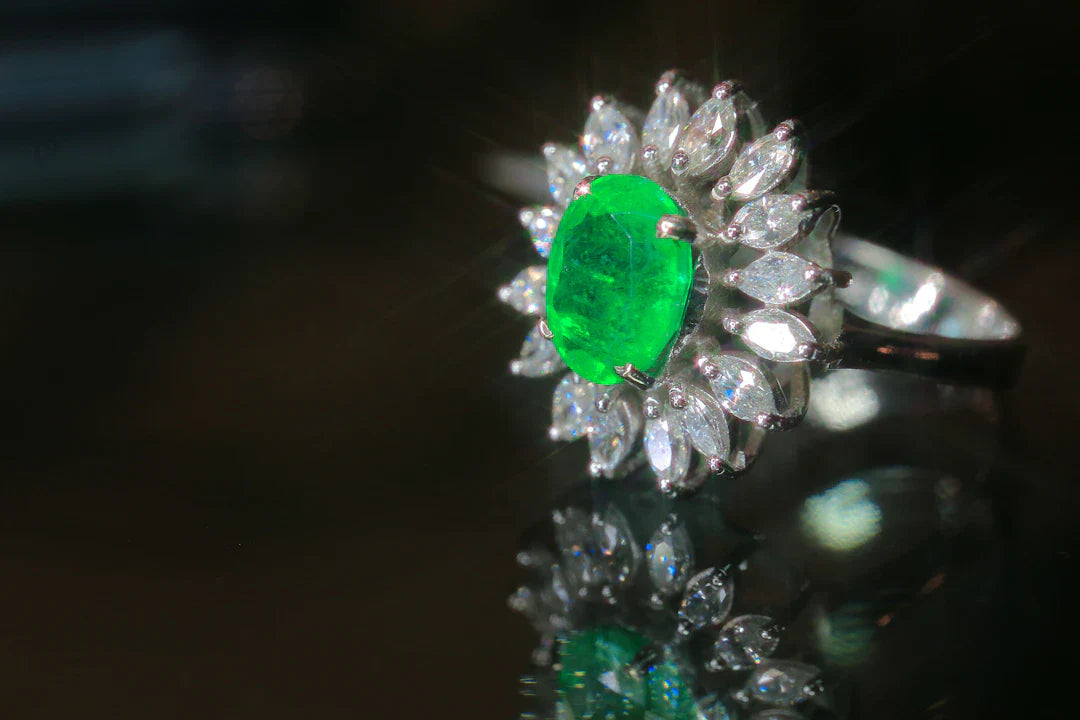Overview
Emerald jewelry is increasingly produced through sustainable practices that prioritize environmental protection and community welfare. Consumers are demanding ethical sourcing, leading to responsible mining techniques and support for local artisans. Alternatives like lab-grown emeralds offer eco-friendly options, while trends such as vintage jewelry and minimalist designs promote sustainability. By choosing ethically sourced emeralds, consumers contribute to a more responsible jewelry industry.
Frequently Asked Questions
1. What are emeralds valued for?
2. What does sustainable jewelry production involve?
3. Why is ethical sourcing important for emeralds?
4. What are lab-grown emeralds and their benefits?
5. How can consumers choose sustainable emerald jewelry?
Emeralds have long been treasured for their vibrant color and rarity. As consumers grow increasingly conscious of their purchasing choices, the jewelry industry is responding with sustainable practices that aim to protect both the environment and the communities involved in emerald production. This article explores how sustainable practices in emerald jewelry production, particularly in the realm of fine emerald necklaces, can create a meaningful impact without compromising beauty or luxury.
Understanding Sustainable Jewelry Production
Sustainable jewelry production refers to methods that minimize environmental damage while ensuring fair labor practices. This approach is essential as traditional mining often leads to detrimental effects on ecosystems and the local population. Sustainable practices provide a pathway to a more ethical and responsible jewelry industry.
The Importance of Ethical Sourcing
When it comes to emeralds, ethical sourcing is paramount. Many consumers today want to know where their gemstones come from. They seek assurances that the emeralds they wear embody positive values. This has led to the emergence of sustainable mining practices that prioritize local community welfare, safety, and environmental conservation.
Responsible Mining Techniques
Emerald mining can be particularly destructive to the surrounding environment. However, responsible mining techniques can lessen these impacts. Sustainable practices often include:
- Artisanal Mining: Small-scale, local miners often adopt methods that reduce environmental damage. This way, they can generate income for their families while preserving the surrounding landscape.
- Reclamation: After mining, companies are now encouraged to rehabilitate the land, restoring it as closely as possible to its original state. This includes replanting native vegetation and protecting local wildlife habitats.
- Water Management: Efficient water usage and management practices are increasingly prevalent to prevent contamination of waterways and to maintain clean water for local communities.
Community Engagement and Development
Sustainable emerald mining isn’t just about extraction; it also requires a commitment to community development. Mining companies now work to improve local infrastructure, healthcare, and education. This not only benefits the community but also ensures that the practices surrounding emerald production are sustainable long-term.
Support for Local Artisans
Local artisans can thrive when fine emerald necklaces are crafted in partnership with sustainable practices. By empowering local artisans, companies promote traditional craftsmanship and cultural heritage. This creates a ripple effect, providing income and job opportunities while preserving invaluable skills.
The Role of Certification and Transparency
In a world where consumers demand transparency, certification plays a critical role. Organizations focused on ethical sourcing provide certifications that can assure consumers of a product's commitment to sustainable practices. Jewelers who provide fine emerald necklaces often include their sourcing information to build trust and authenticity.
Traceability in Emerald Supply Chains
A transparent supply chain can significantly influence purchasing decisions. Advanced technologies, like blockchain, are increasingly implemented to track emeralds from their origin all the way to retail. This not only enhances consumer confidence but also applies pressure on mining operations to adhere to sustainable practices.
The Environmental Impact of Alternative Methods
Beyond responsible mining, alternative methods for producing emeralds have emerged, including laboratory-grown gemstones. These alternatives offer a sustainable solution that can mimic the beauty of natural emeralds without the associated environmental degradation.
Lab-Grown vs. Natural Emeralds
Lab-grown emeralds provide an exciting option for eco-conscious consumers. They offer significant benefits:
- Reduced Environmental Damage: Lab-grown gems eliminate the need for mining, thus protecting ecosystems and reducing land disturbances.
- Cost-Effective: Typically, lab-grown emeralds are less expensive than their natural counterparts, making stunning jewelry more accessible.
- Ethical Considerations: Without the complexities associated with mining, lab-grown emeralds minimize concerns regarding labor practices and social issues.
Trends in Sustainable Emerald Jewelry
As the demand for sustainable practices grows, so do innovative trends. Jewelers around the world are constantly evolving to incorporate sustainable processes in their fine emerald necklaces and other jewelry collections.
Vintage and Upcycled Jewelry
An exciting trend is the use of vintage or upcycled materials. By reusing existing materials, jewelers create unique pieces while reducing waste. This approach allows consumers to wear history while embracing sustainability.
Minimalist Designs
Sustainable practices also manifest in the design of the jewelry itself. Consumers are leaning towards minimalist designs that use fewer resources while still showcasing the beauty of fine emerald necklaces. These pieces celebrate the gem rather than overwhelming it with excess material.
How to Choose Sustainable Emerald Jewelry
Consumers can often find it challenging to navigate the landscape of jewelry shopping, especially when trying to make ethical purchases. Here are some tips for choosing sustainable emerald jewelry:
- Research the Brand: Investigate their commitment to sustainable practices and ethical sourcing.
- Ask for Certifications: Look for brands that provide certification confirming their gemstones' origins and ethical production.
- Support Local Artisans: Opt for small businesses and artisan jewelers who practice sustainability.
The Future of Sustainable Emerald Jewelry Production
The shift toward sustainable practices in emerald jewelry production is not just a trend; it represents a fundamental change in the industry. As we continue to acknowledge the importance of environmental and social responsibility, consumers and jewelers alike play a crucial role in shaping the future of jewelry.
Building a Community of Responsiveness
As these practices gain traction, the industry will continue to grow towards sustainability. Expect to see more collaborations between brands, communities, and environmental organizations aimed at creating a more equitable and conscious jewelry market.
Shining a Light on Sustainable Choices
The journey toward sustainability in emerald jewelry production is an essential one that reflects the values of today’s consumers. By choosing ethically sourced gems and supporting responsible practices, you are not only enhancing your collection of fine emerald necklaces but also contributing to a healthier planet and empowered communities.
With the continual evolution of sustainable practices and technologies, the future of emerald jewelry is bright. Your choices as a consumer can have profound impacts on the industry and the world around you—so shine a light on sustainability with each purchase!




Leave a comment
This site is protected by hCaptcha and the hCaptcha Privacy Policy and Terms of Service apply.